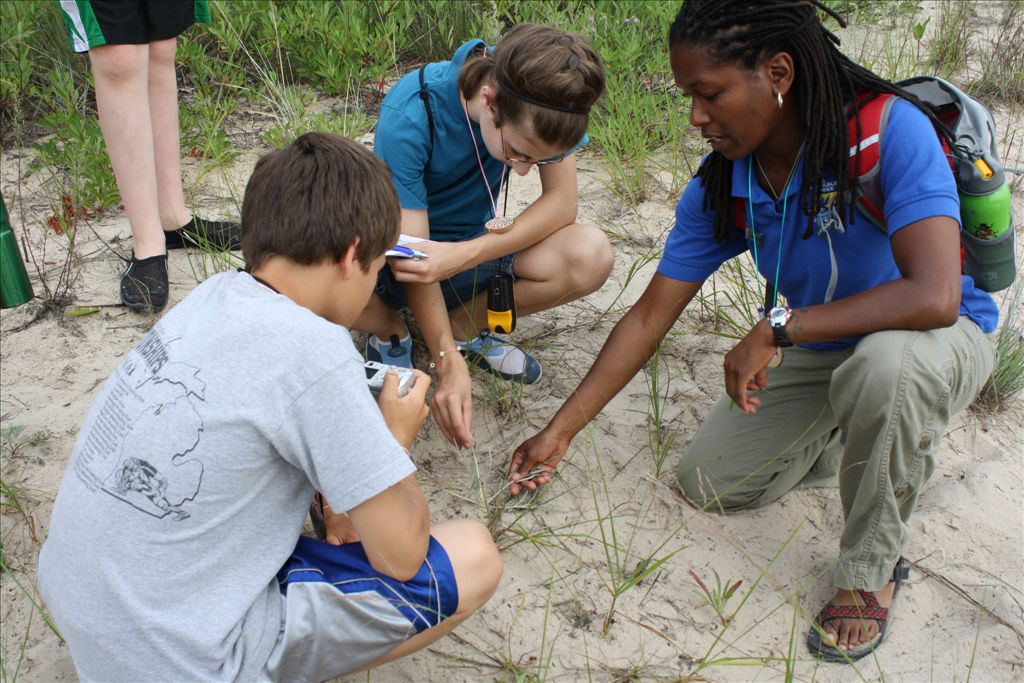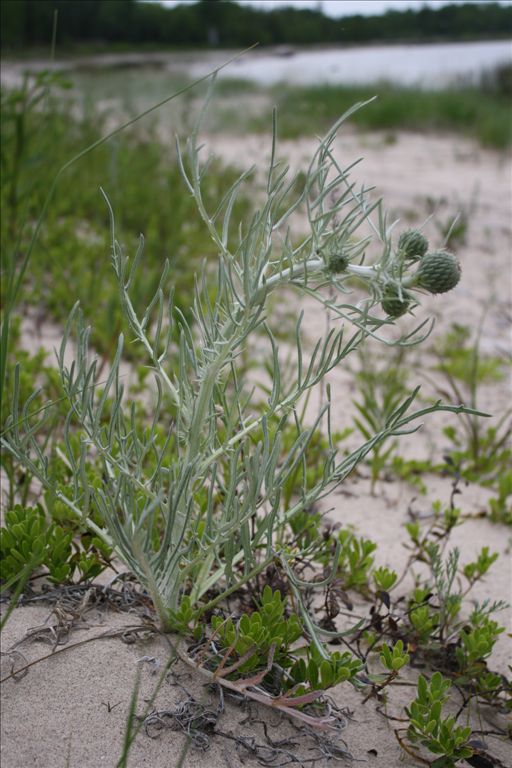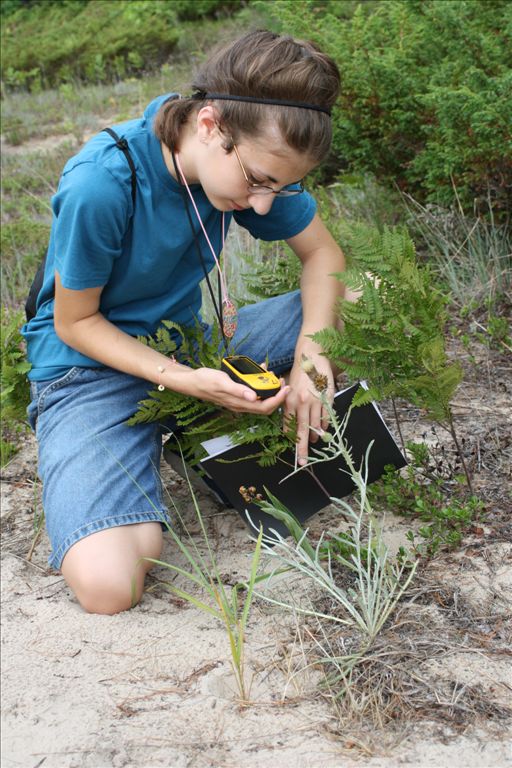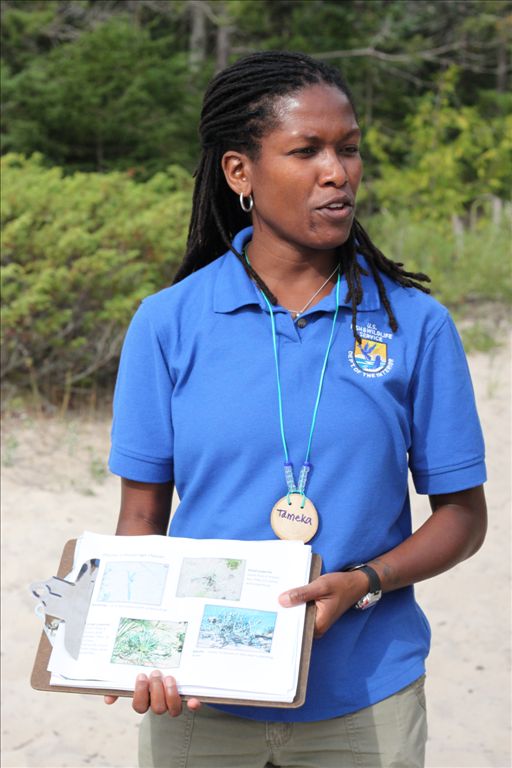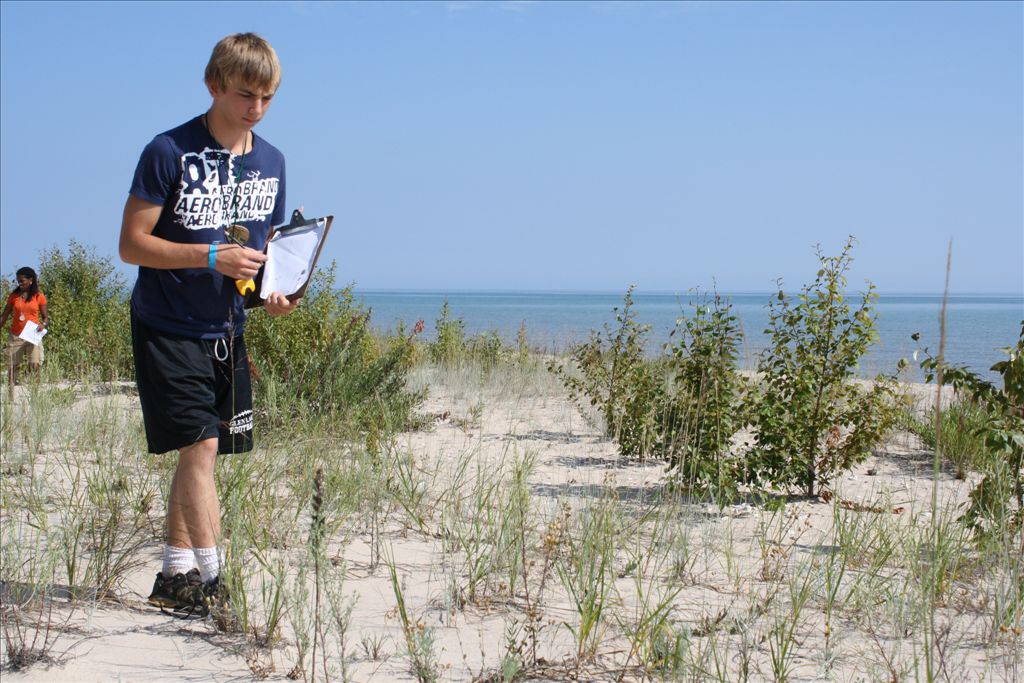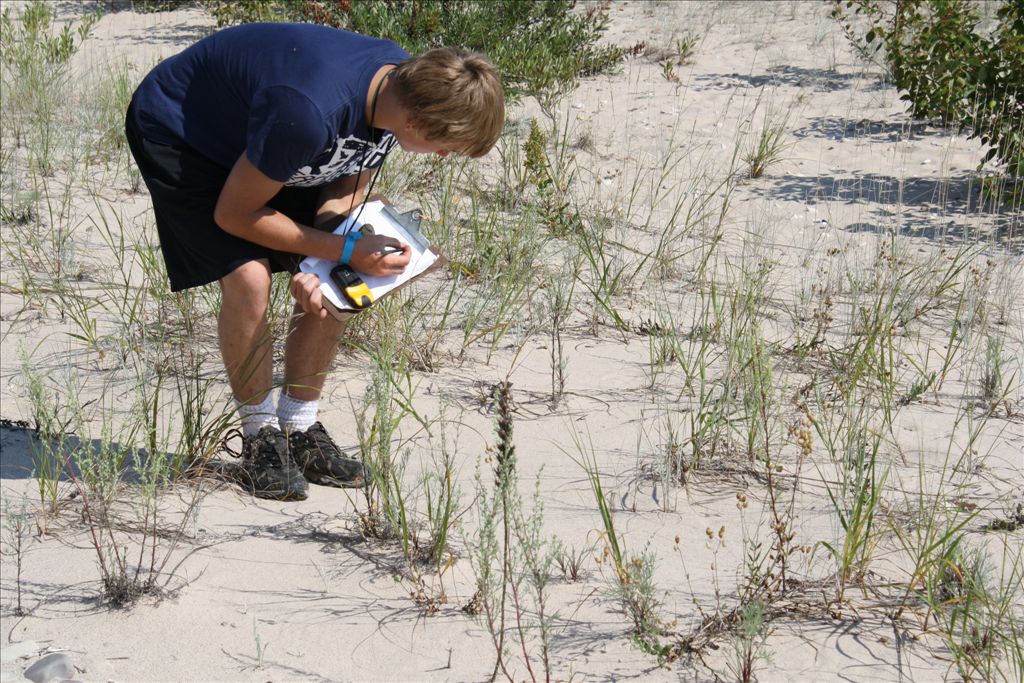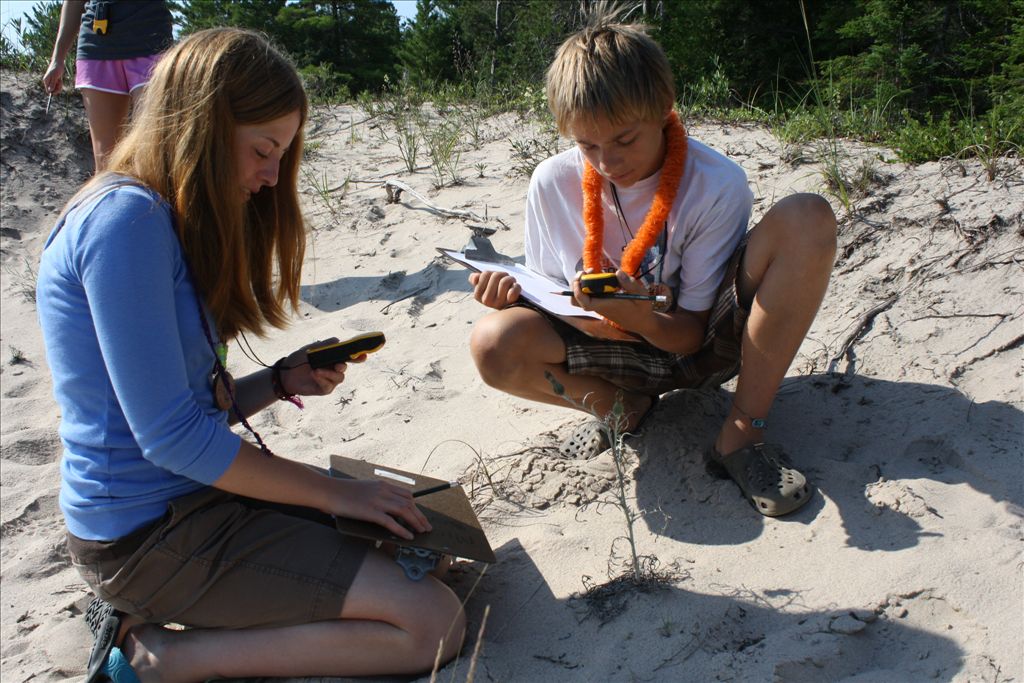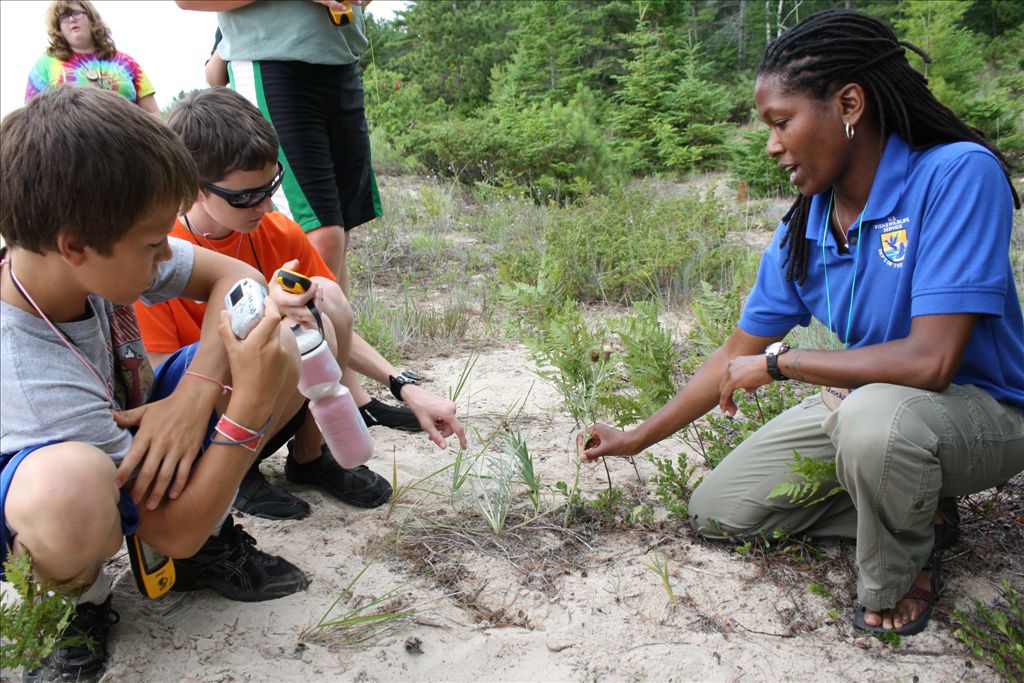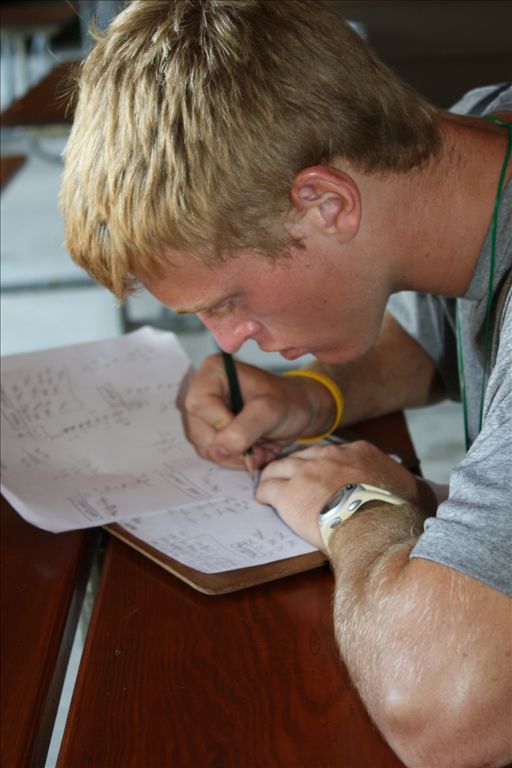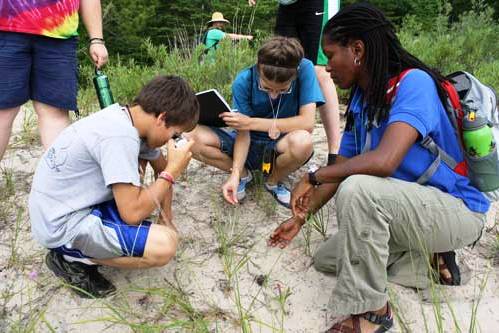What do you get when you bring 70 Michigan youth together to learn about the Great Lakes and natural resource science topics such as fisheries, woods and wildlife, wetlands and watersheds? You get students who learn about Michigan’s natural resources through amazing hands-on experiences at 4-H Great Lakes and Natural Resources Camp (GLNR).
The 2011 4-H GLNR maintained its long tradition of excellence as an award-winning program when it welcomed more than 80 youth campers and counselors to Presque Isle, Michigan in early August. While the campers learned a great deal about science and recreation through focused activity sessions, youth leadership was an essential aspect of camp, as well. “I really benefited from this camp by learning new things about leadership and why we need to conserve our natural resources. This camp opened up my horizons. I love how it has given me skills I will be able to use elsewhere,” said Nate Carson, youth participant.
This year, campers put their community-conservation leadership skills into practice as they contributed to a coastal inventory of the federally and state-threatened Pitcher’s thistle plant. In 3 coastal northern Lake Huron properties of Presque Isle County (Besser Natural Area, Thompson’s Harbor State Park and P. H. Hoeft State Park), campers inventoried and mapped the Pitcher thistle plant through global positioning system (GPS) technology. This important inventory of nearly 1698 plants across these 3 sites now documents plant populations previously known in this region of the state but never surveyed.
"This year’s GLNR was an absolute blast! During the endangered plants session, we learned that the Pitcher’s thistle is just an ordinary plant in the wetlands area, but is endangered,” said Schuyler Bates, a youth participant. “We got to use these cool GPS units and marked the coordinates where the plants were. Then we were told that the data we collected was going to be used at the lab for actual use! After camp, I was out in the wetlands with some friends and identified some Pitcher’s thistle plants for them."
Through hands-on integration with the coastal community and plant science like this, youth science contributes survey findings to agencies like the U. S. Fish and Wildlife Service (USFWS), Michigan Department of Natural Resources and Michigan Natural Features Inventory (MNFI). “Having the campers count and map these populations contributes to the recovery of the species,” said USFWS Wildlife Biologist, Tameka Dandridge. “This actually, especially if repeated annually, meets one of the recovery criteria.” Campers’ GPS points of these plant populations are now utilized by USFWS and MNFI to monitor this particular plant species in northern Lake Huron.
4-H GLNR is sponsored by Michigan 4-H Youth Development of the Michigan State University Extension Children and Youth Institute, The Michigan 4-H Foundation, Michigan Sea Grant Extension, Michigan Charter Boat Association, MSU Department of Fisheries and Wildlife and MSU Department of Community, Agriculture, Recreation and Resource Studies (CARRS).
